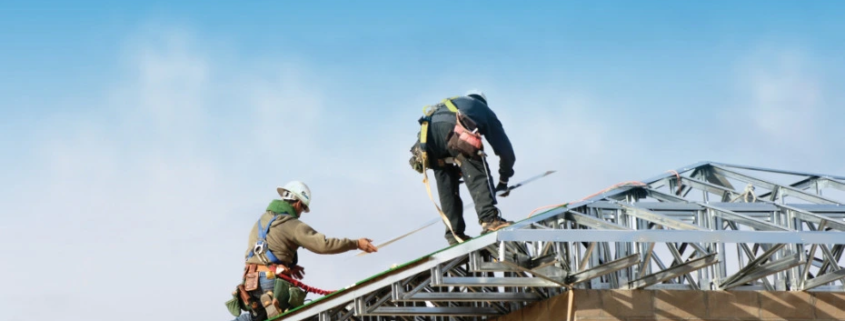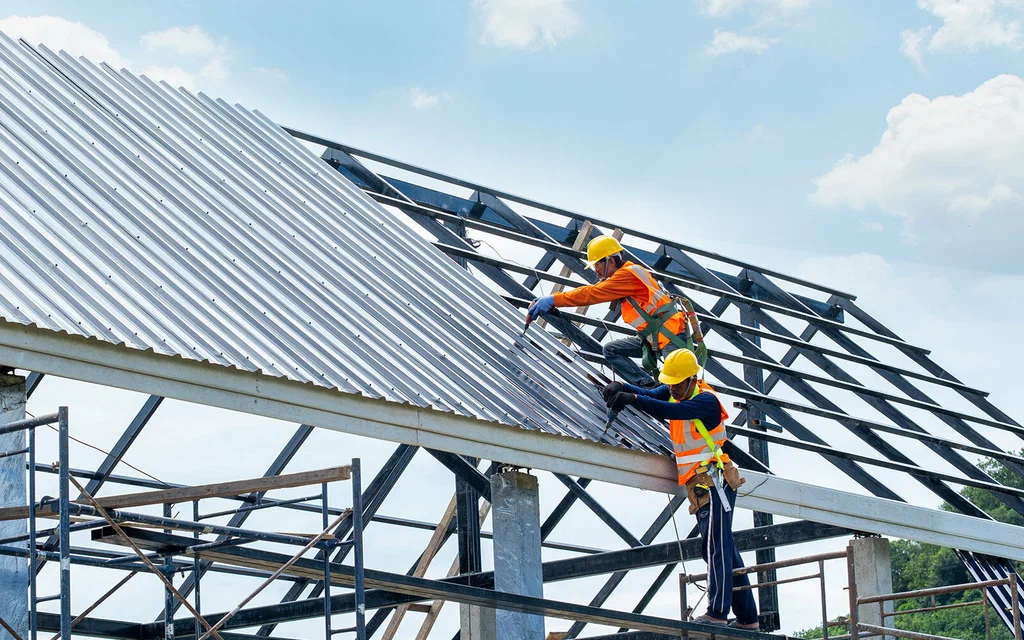How Upgrading Roof Hatches Can Lower Commercial Building Costs and Enhance Energy Efficiency?
Are you searching for how upgrading roof hatches can actually save money while making your commercial building more energy efficient? The correct thermally broken roof hatches not only lower commercial building costs but also aid in reducing the cost of maintenance, undue condensation, and lowering the HVAC workload, and also enhancing the efficiency of operations and meeting code requirements.
Introduction
Need to reduce expenses and increase efficiency in your commercial building? The improvement of roof hatches can help a lot. Thermally broken roof hatches enhance the energy efficiency of the building with approximately 20 R-value. Which enables your building to be comfortable to reduces the maintenance expenses.
Depending on the size and location of the building, the actual savings of upgrades can be as much as 20% of the energy bills. Babcock-Davis ThermalMAX is also made of high-quality materials to improve insulation, durability and long-term savings.
Placing roof hatch upgrades during an early phase would be appropriate to enable the appropriate positioning, code compliance and improve the building performance. Learn more about integrating these improvements by seeing our blog on Important Design Considerations for the Doors in Commercial Construction.
What Are Thermally Broken Roof Hatches?
Wondering the way how a simple hatch will save energy? Thermally broken roof access hatches are designed in a special way to minimize the amount of heat that is transmitted between the interior and exterior metal parts of a building. This thermal break provides superior insulation, maintains energy consumption low and prevents the occurrence of condensation, which destroys roofing materials.
Built to last: The hatch constructions are usually constructed with high-quality materials such as polyisocyanurate insulation, aluminum, and powder-coated steel which make them both durable and economical. As an example, Nystrom ThermalMAX hatch has a thermal R-value of 20.3 and is therefore quite efficient in reducing heat loss.
Pro tip: It is possible to enhance the overall energy performance with the inclusion of thermally broken hatches in the early building design and it can be easily integrated into BIM/CAD plans. To learn more about documentation and CAD integration, see our blog What are CAD Files? Types, Formats and Uses in 2025.
How Roof Hatches Improve Energy Efficiency?
Wish to experience actual energy saving? Upgrading to a thermally broken roof hatch importantly boosts energy efficiency in commercial buildings. These hatches exclude heat transmission by incorporating a thermal break and high-performance insulation. This makes interiors comfortable and minimizes unwarranted energy wastage.
The best materials such as polyisocyanurate, enhance the maximum insulation and the contemporary designs cause a decrease in the workload of the HVAC system to operate at high efficiency and the overall cost of operation is reduced. To provide an example, the Gorter RHTEP Roof Hatch has a U-value of 0.198 W/m 2K, which is the best available thermal performance.
Pro tip: Thermally broken hatches should be combined with other energy-efficient building elements in order to triple savings. The BIM/CAD planning is used to optimize the location and to create a perfect fit with your structure. Read our guide on keeping in line with building design.
| Feature / Metric | Standard Roof Hatch | Thermally Broken Roof Hatch | Benefits of Thermally Broken Hatch |
| U-Value (W/m²K) | ~0.45–0.50 | ≤ 0.198 | Lower heat transfer, better insulation |
| R-Value | ~5–8 | ~20 | Improved energy efficiency |
| Heat Loss | High | Low | Reduces heating/cooling energy consumption |
| Condensation Risk | Moderate–High | Low | Protects the roof structure and materials |
| HVAC Workload | Higher | Lower | Less strain on the HVAC system and lowers operating cost |
| Energy Savings Potential | Baseline | Up to 20% | Reduces utility bills |
| Durability | Standard metals | Aluminum or powder coated steel + polyisocyanurate | Longer lifespan and less maintenance |
How Roof Access Hatch Reduces Maintenance Costs?
Need to save on long-term building costs? By replacing the roof hatches with thermally broken access doors and panels, one will not only increase the level of energy efficiency but will also reduce maintenance expenses. These hatches also prevent condensation which means that the roofing materials are not affected by mold, corrosion and structural damage to ensure that your building remains in good condition.
As an example a 50,000 ft² commercial building might save about $3500 per year in maintenance expenses by replacing improperly insulated thermally broken hatches. HVAC strain is minimized and fewer repairs are required which leads to an increase in operational efficiency so this upgrade is a smart NOI.
Pro tip: Include thermally broken hatches in your design or renovation plan early to maximize ROI. See how to integrate access solutions effectively in our guide on design considerations for doors in commercial construction.
Learn more and upgrade with CAD Drafter today.
Real-World Examples and Cost Estimates
Wonder how much upgrading roof hatches can actually save? We can deconstruct it using real-life examples:
- 5,000 ft² office building: A typical implementation of a thermally broken roof hatch is around $400. Annual energy costs saved may go up to $200 and a further $150 on maintenance expenditures saved.
- 100,000 ft² warehouse renovation: Renovation of 20 roof hatches between $150 and $600 would result in energy and maintenance savings of approximately $15,000 annually.
- High-risk inspection scenario: High-risk, hatches are well insulated, no condensation or damaged materials result and the cost of repairing the hatches would be an estimated $5000 and more.
To be integrated with building plans, the CAD and BIM tools can be used to provide the correct location and design efficiency. How to Convert Scanned Drawings to CAD (DWG) is going to answer this question.
Conclusion
Upgrading to thermally broken roof hatches is more than a building upgrade because it’s a smart investment. These hatches increase the efficiency of energy, lower maintenance expenses and bring about the benefits of safety and code compliance, which is a quantifiable benefit to any building of commerce.
In CAD Drafter, we have a range of projects in our portfolio that are detailed BIM designs of access doors and panels that maximize energy performance, increase safety, and manage costs. We assist facility managers and architects to make intelligent decisions with long-term objectives through expert drafting, detailing and compliance-based design services.
Are you planning to renovate your building? Contact us now to find out more about Architectural CAD drafting services or get to know more about BIM modeling for commercial projects to design your most energy-saving and cost-effective upgrade.
FAQs
What extent does a thermally broken roof hatch save on the heating and cooling?
Thermally broken roof hatches can help save 20% of energy based on the location and size of the building.
What is the recommended R value of energy efficient roof hatches?
An R value of 10 and above would be considered as appropriate insulation and energy efficiency.
How do roof hatches behave in case condensation is experienced and how it can be prevented?
The material will be damaged by condensing, corroded and moulded. Thermally broken ventilated hatches would help to help curb this risk a long way.
Which safety characteristics are to be provided in roof hatches?
The main distinguishing characteristics are guardrails, safety rails and secure lock-up systems that guarantee the use of the OSHA standards and safe access to the roof.
How does the market increase of roof hatches increase?
The roof hatch market in the world is estimated to increase to USD 250B in 2023 again to USD 350B in 2031 having a 5% CAGR (Verified Market Research).




